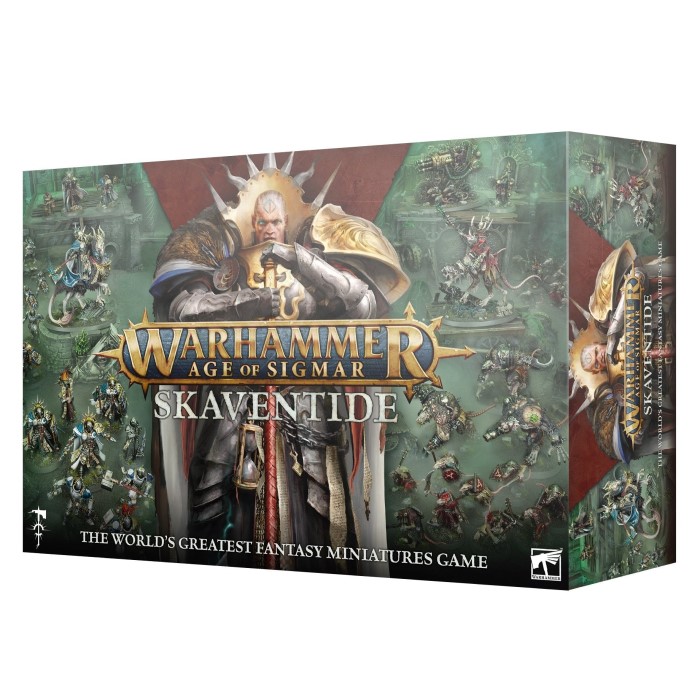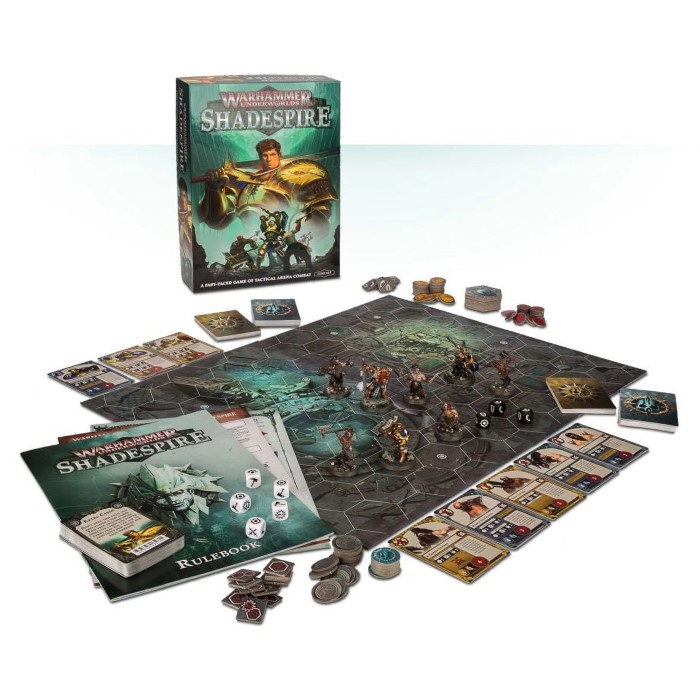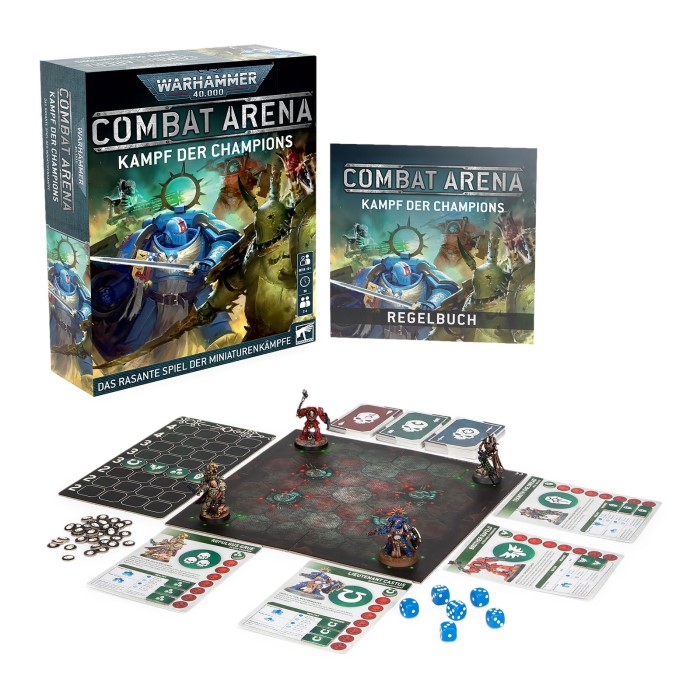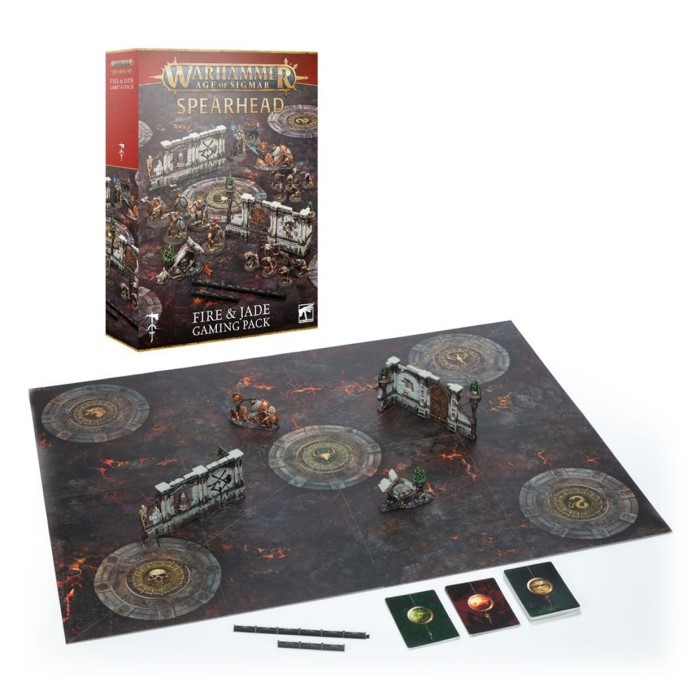Introduction
Warhammer board game is a mix of strategy, creativity, and storytelling. The games are designed for players who enjoy intense tactical challenges and crafting their own miniature armies. With layers of complexity, they offer deep gameplay experiences across different universes, including fantasy and sci-fi themes.
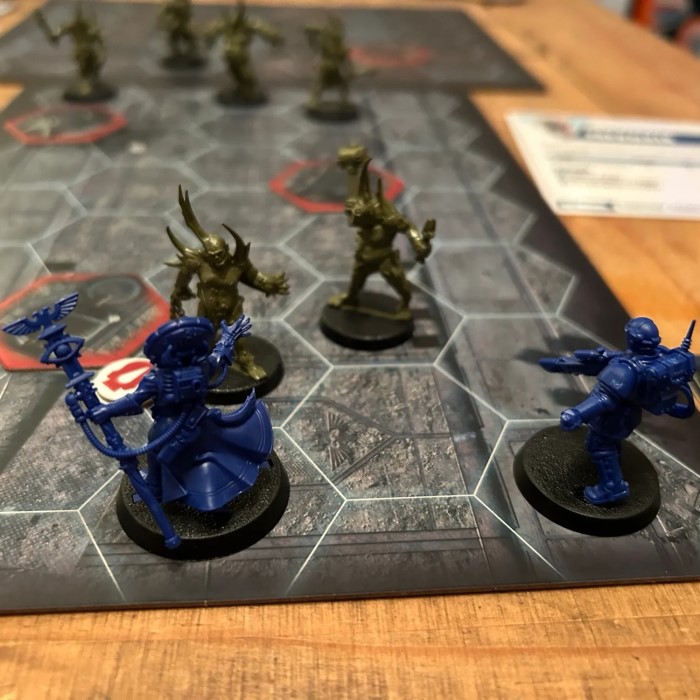
What Makes Warhammer Unique?
- Miniature-Based Gameplay: Players collect, build, and paint detailed miniatures to represent their armies.
- Expansive Lore: The Warhammer universe includes rich stories set in dynamic worlds.
- Strategy-Driven Tactics: Victory depends on careful planning, resource management, and strategic use of units.
- Highly Customizable Playstyles: Each faction and model has unique rules, allowing personalized gameplay.
Who Can Play Warhammer Board Games?
Warhammer games are perfect for fans of fantasy, sci-fi, and strategy. Whether you’re experienced or a beginner, there’s a game or edition tailored to your skills. Hobbyists who enjoy painting and collecting will also love the artistic aspect. Players can immerse themselves in building armies or mastering tactical gameplay over time.
Why Choose Warhammer?
Warhammer combines fun, creativity, and challenges. It’s not just about playing—it’s about building, painting, and storytelling. Whether playing casually or competitively, there’s always room for memorable battles and collaboration with others in the community.
History and Evolution of Warhammer
Warhammer has a rich history spanning decades. It began as a tabletop game in 1983, created by Games Workshop. Initially, it focused on fantasy battles, bringing together miniature warriors, monsters, and magical creatures. The game captured attention with its detailed models and engaging mechanics.
Early Years and Growth
In its early years, Warhammer Fantasy Battle established the concept of miniature-based strategy games. Players enjoyed designing armies and competing in epic battles. The game’s success led to expansions and additional rules, keeping gameplay fresh and exciting.
Introduction of Warhammer 40,000
In 1987, Games Workshop launched Warhammer 40,000. This sci-fi version of the game introduced futuristic armies and alien worlds. It complemented the fantasy series while attracting new audiences. The deep lore and advanced mechanics pushed Warhammer’s popularity further.
Continuous Innovation
Warhammer continued evolving with new editions and versions over the years. Each edition updated rules, refined gameplay mechanics, and introduced fresh units. This constant innovation ensured players stayed engaged and found challenges in every game.
Expanding Beyond Games
Warhammer expanded beyond tabletop board games. The franchise branched into books, video games, and merchandise. Its universes became celebrated for their complexity and creativity, drawing in fans worldwide.
Legacy and Community
Today, Warhammer enjoys a massive global community. It is not just a game but a hobby involving painting, storytelling, and strategy. The rich history and continuous updates make Warhammer board games a timeless choice for players and collectors alike.
Core Mechanics and Gameplay of Warhammer
Warhammer is a board game that blends strategy, creativity, and competitive gameplay. At its core, the game involves players commanding miniature armies to compete in tactical battles. Here’s a breakdown of the key elements that define Warhammer’s mechanics and gameplay:
Miniature-Based Army Building
Warhammer starts with creating your army using detailed miniatures. Players assemble, customize, and paint these models to represent their faction. Each miniature has its own stats and abilities, making army composition crucial for success.
Dice-Based Actions and Outcomes
Dice rolls play a critical role in determining the outcome of actions. From attacking and defending to resolving special abilities, dice influence every stage of the battle. Strategic planning helps mitigate risks while relying on luck to enhance gameplay excitement.
Tactical Movement and Positioning
Positioning units on the game board is vital in Warhammer. Terrain features like hills, forests, and obstacles impact movement and advantage during combat. Success comes from anticipating enemy moves and positioning units effectively.
Detailed Combat Mechanics
Warhammer’s combat system uses model-specific stats, such as weapon strength, armor, and range. Combat includes melee attacks, ranged assaults, and magical abilities. Players must work to exploit weaknesses and synergize their units for maximum impact.
Balancing Resources and Strategy
Players manage resources like command points and abilities to execute strategic moves. Resource allocation impacts the effectiveness of actions, making it key to balance short- and long-term strategies.
Scenario-Based Objectives
Warhammer provides a variety of scenarios and missions, each with specific objectives. These range from capturing territories to eliminating certain enemies. Victory hinges on fulfilling these objectives, not just defeating opponents.
Playstyles and Faction Dynamics
Different factions offer unique abilities, playstyles, and lore. Players customize strategies based on their chosen faction’s strengths and weaknesses. This diversity enables rich and varied gameplay experiences.
With these core mechanics, Warhammer creates an engaging mix of strategy, unpredictability, and creativity for players. Its vast universe of rules and options ensures no two games are alike, keeping the experience fresh and exciting every time.
Exploring Different Warhammer Games and Editions
Warhammer offers an extensive variety of games and editions. Each caters to unique interests and playstyles. From fantasy battles to futuristic warfare, there’s something for every player.
Warhammer Fantasy Battle
Warhammer Fantasy Battle is the original game in the Warhammer series. It focuses on epic battles with magical creatures and medieval armies. Players enjoy commanding knights, elves, or wizards to fight in rich, detailed worlds.
Warhammer 40,000
Warhammer 40,000, or Warhammer 40K, brings the game into the sci-fi realm. It features futuristic armies, alien species, and advanced technologies. Players strategize in galaxy-wide conflicts while exploring its deep lore.
Age of Sigmar
Age of Sigmar is the refined successor to Warhammer Fantasy Battle. It simplifies rules while maintaining depth. The gameplay focuses on heroes, divine warriors, and magical battles in surreal realms.
Kill Team
Kill Team presents a smaller-scale version of Warhammer 40K. It’s ideal for shorter missions and faster gameplay. Players control specialized teams for tactical, unit-based combat.
Warhammer Underworlds
Warhammer Underworlds combines board game strategy with miniature-based combat. It emphasizes competitive play, focusing on small skirmishes. Deck-building options add another layer to the gameplay.
Other Editions and Expansions
Warhammer offers countless editions and expansions. These include themed campaigns, unique armies, and special missions. Each expansion enriches the core experience and brings fresh challenges.
Exploring different Warhammer games and editions allows players to find their perfect experience. Whether they love fantasy, sci-fi, or quick matches, Warhammer has a game for everyone.
Essential Components and Miniatures for Warhammer
To fully enjoy Warhammer board games, you need the right components and miniatures. These items are the foundation of the game, ensuring immersive battles and strategic gameplay.
Core Components Needed
- Rulebook: Every game starts here. The rulebook explains core mechanics and gameplay.
- Miniatures: These are the player’s units. Each faction has unique models with specific stats.
- Game Board and Terrain: The battlefield often includes designed terrains like hills, forests, and obstacles.
- Dice: Dice determine the outcome of attacks, movement, and other key actions.
- Measuring Tools: Rulers or measuring tools help gauge distances for movement or attacks.
- Tokens and Markers: These track statuses, abilities, or resources during gameplay.
- Command Cards or Decks (Optional): Some expansions use cards to add new abilities or strategies.
Miniatures: Collecting and Customizing
Warhammer’s miniatures make it special. You don’t just play with them—you build and customize them:
- Faction-Specific Models: Choose models based on your chosen faction’s traits and lore.
- Assembly: Miniatures arrive unassembled and need careful construction.
- Painting: Adding unique colors enhances each model’s personality and immersion in the universe.
- Customization Options: Many kits allow adding weapons, armor, or accessories for personalization.
Game Essentials for Beginners
- Starter Sets: These include miniatures, simplified rules, and basic terrain for beginners.
- Paint Starter Kits: Paint kits come with selected colors for initial customization projects.
- Essential Tools: Clippers for assembly and brushes for painting are crucial starting tools.
- Pre-Built Models: Some miniatures are pre-assembled, perfect for players focusing on gameplay.
Gathering these core items creates a fun, creative Warhammer experience. The miniatures not only define your battles but also bring rich storytelling and strategy into play, making every game unique!
How to Build and Paint Warhammer Miniatures
Building and painting Warhammer miniatures is a critical part of the hobby. This process is where creativity meets craftsmanship. It allows players to bring their armies to life while adding a personal touch. Here’s how you can get started in building and painting your Warhammer miniatures.
Step-by-Step Guide to Building Miniatures
- Gather Tools: You need clippers, hobby knives, and glue for assembling your miniatures.
- Organize Pieces: Separate all parts from the sprues for easier assembly.
- Clean and Trim: Remove excess material to ensure smooth edges and clean surfaces.
- Assemble Models: Follow instructions to glue pieces together precisely. Take your time for accuracy.
- Allow Drying: Let all glued parts dry completely before handling further.
Painting Miniatures: Tips and Techniques
- Prepare Your Workspace: Keep a clean area with good lighting and sturdy brushes.
- Prime Miniatures: Apply a primer base coat to help paint adhere. Choose a neutral color like gray.
- Use Thin Paint Layers: Thin paint with water for smoother coverage and fewer brush marks.
- Begin with Base Colors: Start with the primary colors of your model and work outward.
- Add Details: Use smaller brushes to add intricate details like eyes, armor, or weapons.
- Apply Washes and Highlights: Use washes for shading and lighter tones for finishing highlights.
- Seal Your Work: Apply a sealant to protect painted miniatures from scratches.
Tools Needed for Painting
- Brushes: Choose fine-tip brushes for details and larger brushes for base coats.
- Paints: Use Warhammer-specific paint sets or acrylics for vibrant colors.
- Palettes: Use palettes to mix and thin your paints as needed.
- Magnifying Lens: A magnifier helps paint small details accurately.
Troubleshooting Common Mistakes
- Excess Glue: Wipe off extra glue before it dries for a clean finish.
- Paint Smudges: Correct mistakes by painting over smudges carefully.
- Overuse of Washes: Use washes sparingly to avoid muddy-looking miniatures.
Building and painting miniatures is both creative and rewarding. The final product not only enhances your gameplay but also showcases your skill and dedication.
Strategy Tips for New Warhammer Players
Starting your journey in Warhammer board games can seem challenging but rewarding. Here are essential strategy tips for newcomers to help navigate this complex yet exciting hobby.
Understand Your Faction
Choose a faction that fits your interests and playstyle. Learn their strengths and weaknesses. Focus on their unique abilities and use them strategically during battles.
Build a Balanced Army
Combine different units to create a versatile force. Use ranged units for attacks and melee units for close combat. Include support units to heal, buff, or improve your army’s effectiveness.
Master the Rulebook
Read the rulebook thoroughly. Familiarize yourself with core mechanics, combat systems, and special abilities. Revisit tricky sections for clarity.
Plan Ahead
Always plan several moves in advance. Anticipate your opponent’s strategies and counter them. Position units effectively to exploit terrain and limit enemy advantages.
Use Terrain to Your Advantage
Learn how terrain impacts movement and combat. Use obstacles for cover or to block enemy attacks. High ground can offer strategic benefits like improved range or line of sight.
Manage Resources Wisely
Command points and abilities are limited and valuable. Spend them cautiously to maximize impact. Save points for critical moments in the game.
Practice Dice Rolls
Success often depends on dice outcomes. Practice techniques like consistent rolling to improve accuracy. Adapt strategies based on favorable or poor rolls.
Focus on Objectives
Victory conditions often depend on achieving specific goals, not just eliminating opponents. Prioritize objectives like securing territories or completing missions during gameplay.
Start Small and Build Skills Gradually
Begin with smaller games like Kill Team to learn the mechanics. Expand into larger-scale games as you gain confidence and experience.
Join Practice Games
Play casual matches with friends or local communities. Ask seasoned players for advice during games. Watch competitive matches to understand advanced strategies.
Experiment and Adapt
Try new tactics and units often. Assess what works and adapt your strategies after each game. Experimentation helps you grow as a player.
By following these tips, new players can ease into the Warhammer board game experience. Focus on having fun, building skills, and crafting memorable battles as you progress.
Popular Warhammer Communities and Events
Warhammer has a vibrant global community built around shared passion and interests. Whether you’re a casual player, a competitive strategist, or a hobbyist painter, there’s a place for you to connect and grow. Engaging with these communities and events enhances the Warhammer experience and adds a social dimension to the hobby.
Warhammer Online Communities
- Official Warhammer Forums: A great place to learn from experienced players and discuss gameplay tactics.
- Reddit: Subreddits like r/Warhammer and r/Warhammer40k offer tips, stories, and hobby inspiration.
- Facebook Groups: Many local and international Warhammer groups exist for sharing ideas and organizing meetups.
- YouTube Channels: Creators like “Warhammer TV” provide tutorials, battles, and painting tips.
- Discord Servers: Join servers where players discuss strategies, lore, and organize virtual games.
Local Warhammer Stores and Clubs
- Games Workshop Stores: Official retail stores often host events, game nights, and hobby workshops.
- Independent Hobby Shops: Many local stores have dedicated gaming areas and tournaments.
- Gaming Clubs: Community-run clubs provide regular meetups to play, share painting techniques, and more.
Major Warhammer Events
- Warhammer Fest: An annual event showcasing new products, army exhibitions, and competitive matches.
- Grand Tournaments: Official tournaments where players compete at the highest levels of strategy.
- Open Days: Games Workshop hosts these to preview upcoming releases and discuss lore.
- Community Tournaments: Local events are perfect for new players to practice and network.
- Hobby Conventions: Events like AdeptiCon and Gen Con feature Warhammer demos, competitions, and workshops.
Why Join Warhammer Communities and Events?
- Learn Faster: Gain valuable insights and tips from experienced players.
- Stay Motivated: Share painting progress and get inspired by other players’ creativity.
- Make Friends: Connect with others who share your love for Warhammer board game.
- Access Resources: Discover guides, tutorials, and strategies not found in the rulebooks.
- Experience Competition: Test your skills and improve by facing diverse opponents.
Becoming part of these communities and attending events brings added depth to the Warhammer hobby. You can learn, compete, and grow while forming meaningful connections with like-minded players.
